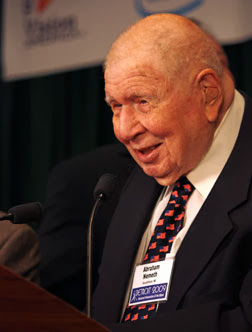God says, V’asu Li Mikdash, V’shakhanti B’tokham — “Make for me a sanctuary that I may dwell among you.” The function of such a spiritual home for God is difficult to comprehend, and to envision how such a structure will look is confusing as well. Further, who will be the chief architect for such a holy task? Who is skillful and pious enough to design a home for God? The master artisan chosen is Betzalel, who beautifully implements God’s instructions concerning the building of the Tabernacle. He, like Moses, is a faithful servant of God. He is described as one who has been filled by God with ruach hakodesh, the divine spirit of God in practical wisdom, discernment, and knowledge in all kinds of workmanship.
True, the Torah recounts that Betzalel, the master builder of the Mishkan (Tabernacle) in the wilderness, received the blueprints for the project from God, but as I explained, the Torah wouldn’t have paid so much attention to the character of Betzalel were he not an important figure in the building of the Tabernacle.
Several years ago I was at Israel’s Diaspora Museum (Beit Hatefutzot) in Tel Aviv and toured an exhibit displaying synagogues from around the world. Located in a huge room were about twenty architectural models, encased in glass, of the most famous synagogue buildings designed to scale. While I don’t consider myself a student of architecture and design (I leave that up to my wife’s uncle Stephen Sussman), I nevertheless was mesmerized by the different layouts and structural designs, the detail inside the sanctuaries, and the unique shapes of the exterior. They were all different edifices from different places around the world – synagogues from India, China, Russia, Eastern Europe, the Colonial U.S., and from South America. Each of these synagogues echoes its cultural and regional diversity. They are all so different, and yet, they all share something in common – they are all holy spaces. They were all built for the same purpose, to be a spiritual house of assembly – a beit kenesset.
Too often today, we take the focus off the actual buildings, the physical structures. We say that what is important is what happens inside of the structure. We believe we must put all our effort on the intangibles, on the actions that take place inside of the building, but we should not overlook the buildings themselves. To do so is to miss beautiful architecture and skillful craftsmanship.
Here in the Metro Detroit area we have two unique synagogue buildings that can be seen from the roadway. Temple Beth El in Bloomfield Township, Michigan was designed by the world renowned architect Minoru Yamasaki in 1973. Yamasaki, the Japanese and American architect, was of course best known for his design of the Twin Towers of the World Trade Center in New York City.
 |
| Temple Beth El, Bloomfield Township, Michigan |
